CATORCE (provisional name) (engl./ fr.)
Series Angulatae (as far as the number of chromosomes is concerned) or Secundae (in regard of the shape of the corolla).
Distribution : Mexico (San Luis Potosí)
This is a not yet described species found in the ruined walls and on rocks around the old mining town of Catorce in San Luis Potosí. It resembles most closely E. secunda and is almost identical with some of its forms, but differs in its taller stems up to 15 cm and more and its very low chromosome number of only n = 12 - E. secunda has n = 30 – 32.
Charles Uhl writes : “Cytologically the plants from Catorce with n = 12 are so different from E. secunda that they can hardly be closely related.” But whether E. ‘Catorce’ really deserves species rank is questionable.
References :
Haseltonia 3, 1995
Haseltonia 6, 1998
Link to a French translation of this text.
Description by Reid Moran of a plant with Uhl’s number 2145 flowering in San Diego in August 1973 (copied from Moran’s Notes) :
Rosette 9 cm wide, of 40 leaves.
Leaves cuneate, truncate, mucronate, to 4 x 2 cm, margins obtuse.
Floral stems 15 – 16 cm to inflorescence, 3 – 3.5 mm thick, reddish, bare in lower 10 cm, with 4 – 5 ascending leaves (= bracts) below inflorescence ; bracts elliptic, acute, apiculate, spurred, ca 13 mm long x 4 – 5 mm ; cincinnus 20 – 24 cm long (in age probably to 30 cm), with 26 – 30 flowers and buds ; pedicels 6 – 10 mm long in flowers now open, x 1 mm, older ones to 19 x 1.5 mm.
Calyx disk 4 mm wide, the segments widespreading, unequal, triangular-lanceolate, acute, 4 – 9 x 1 – 3 mm ; corolla 10 – 11 mm long, 7 – 8 mm wide at base,5 – 6 mm wide at mouth, pentagonal with sides slightly channeled, orange-red with narrow yellow margins above.
Plants in habitat in Mexico :
Plantes dans l'habitat, au Mexique :
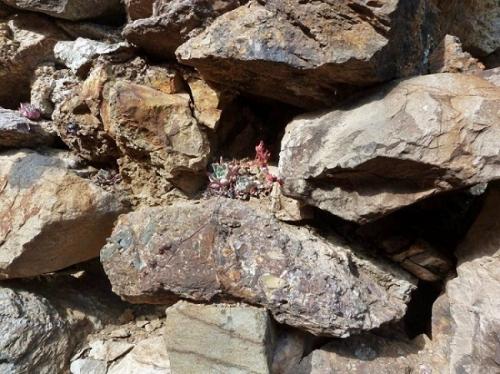
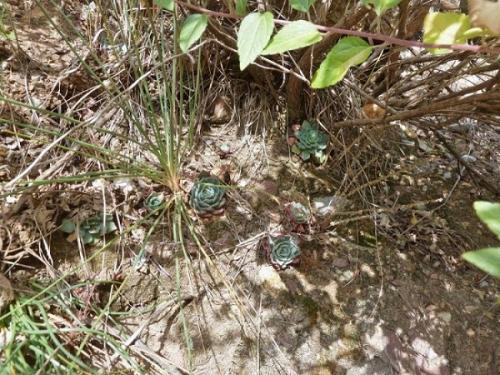
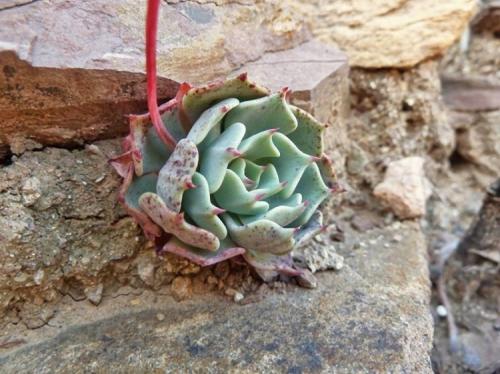
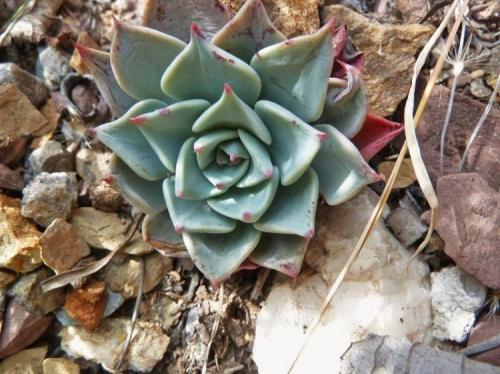
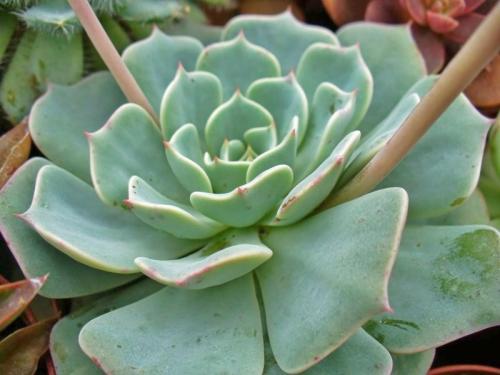
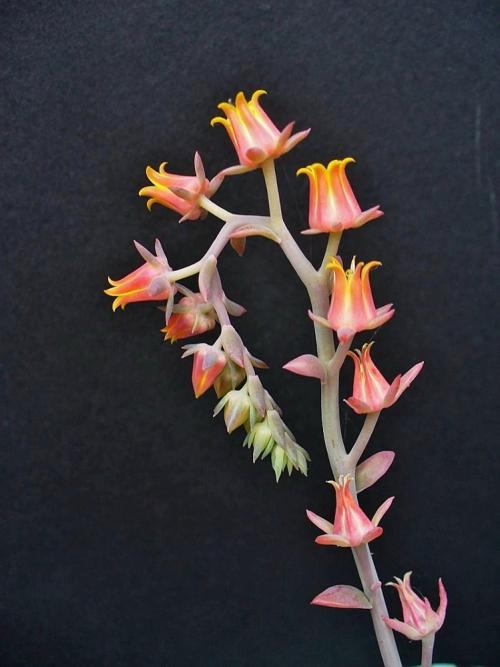
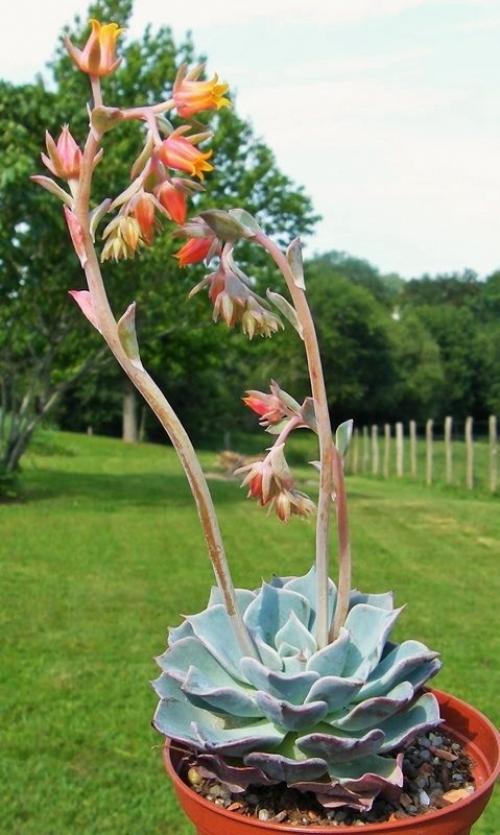
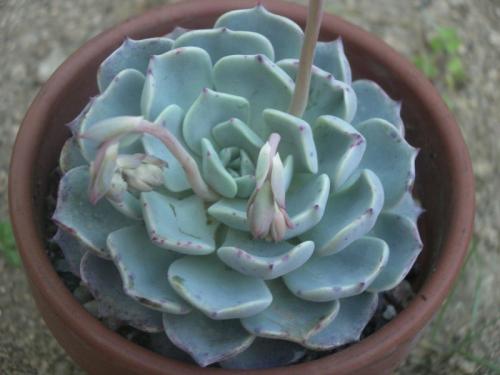
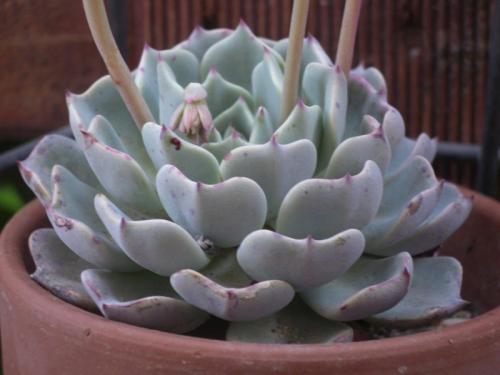
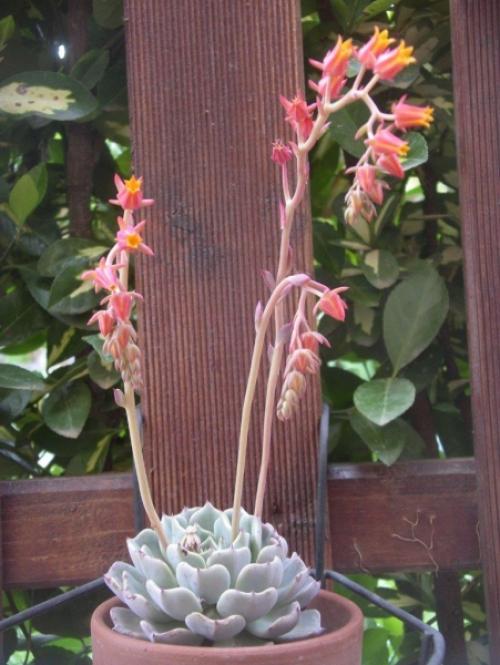
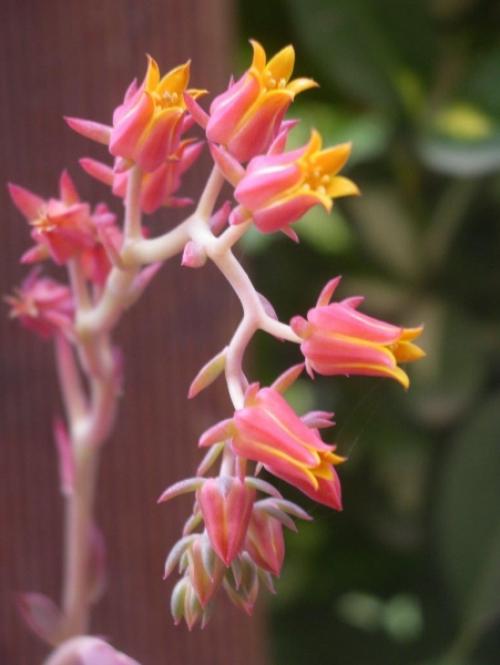
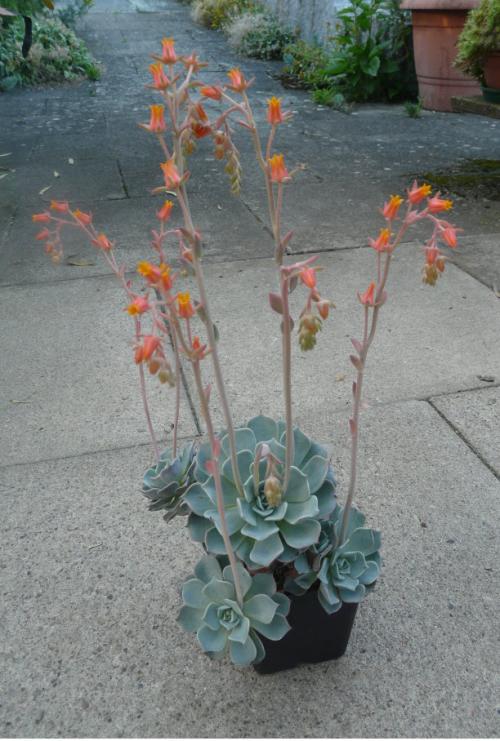
Photo Margrit Bischofberger